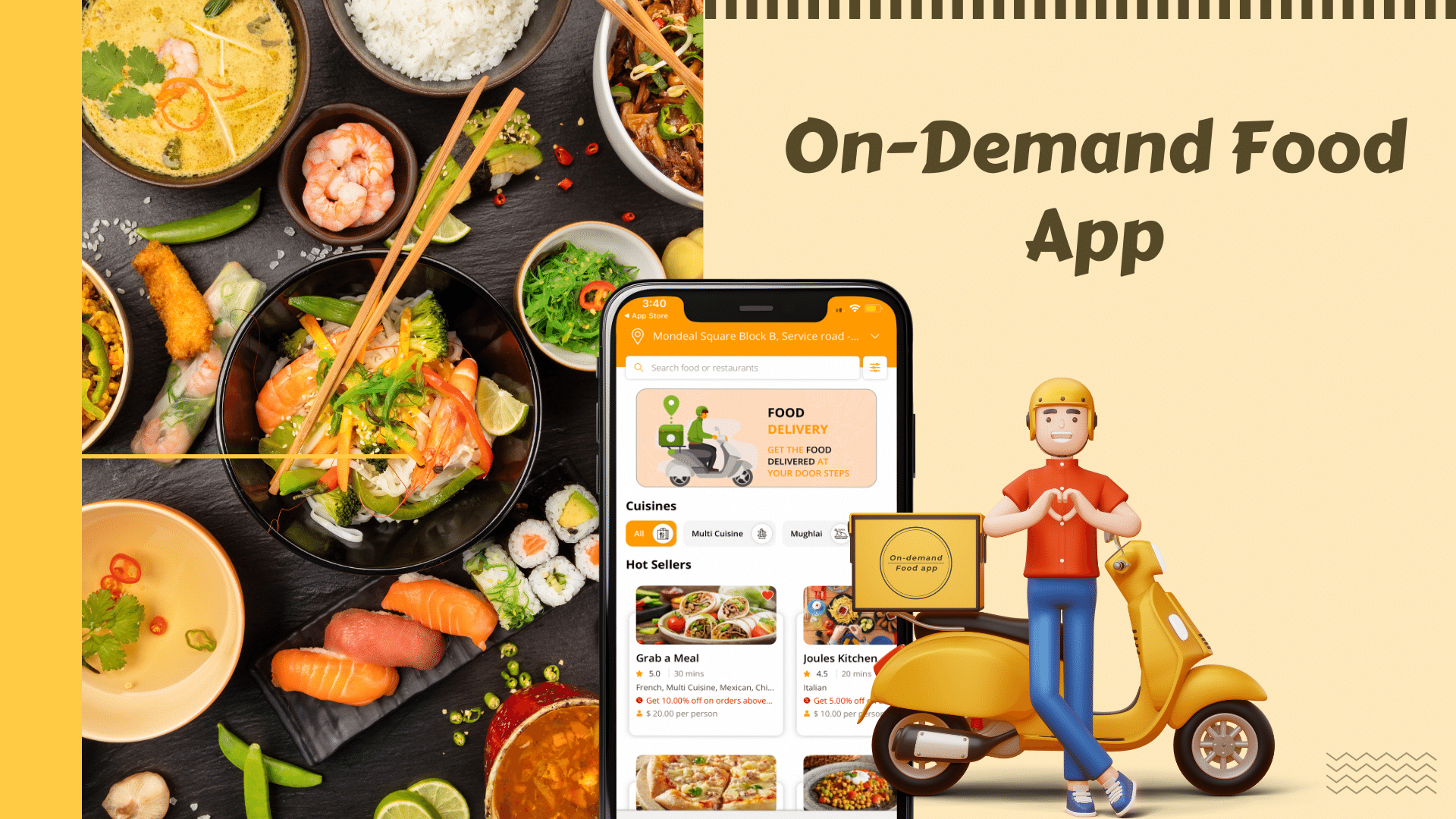In this consumer-driven era, quick and reliable on-demand food apps charge restaurants as well as customers who use their platform to create and accept online food orders. When an order is successfully delivered, a delivery fee based on the distance between the restaurant and the user’s location is charged to the user. In this blog, learn how your food app can also do the same by offering robust delivery services that support its livelihood and growth.
Introduction
The popularity of an on-demand food app at the current pace is rocketing towards a projected $365 billion by the end of the decade. There are dozens of great dining options, yet people end up ordering food through delivery apps four or five times per week. Established players like Deliveroo, Uber Eats, and Doordash would typically deliver food items faster than it would take the average person to get to the restaurant in the first place.
Food apps, like any other delivery app, create a stable source of revenue for their drivers by charging a delivery fee. However, the question is how to deduce the right amount for your food delivery business. And in the end, are they worth the time, or do you just follow what your competitors are charging? To answer such questions, you should closely understand the logistics, packaging, and prevalent locations of your services.
How To Charge Delivery Fees
Delivery fees play a crucial role in influencing purchasing behavior and decision-making. Moreover, they are among the biggest reasons for cart abandonment. The truth is that people don't expect an additional cost to be added to their products at checkout. But if you show one final amount without any additional charges, the chances of ordering food get high. This means that when the delivery fee is charged separately, customers perceive it as an additional cost.
Running a food delivery business is an expensive feat. Not only do you have to handle the logistics on your behalf, but you also need to cover the cost of hiring drivers. These expenses add up quickly to the overall business management process. Hence, many businesses pass these costs on to the end customer via delivery fees. Therefore, when working out how much to charge for delivery, you need to consider your profit margins.
For instance, at the beginning, you must follow the initial investment that you made when you hired delivery drivers. Take that cost along with the cost of development and divide it by the number of average deliveries your restaurant partners can make.
Furthermore, you can also deduce the average duration of food deliveries. The amount you charge might not cover all of your expenses, but it should offset some of the costs. The most common way is to charge a flat fee to set prices covering food delivery costs.
The Impact Of Free Delivery On Sales and Profit
Delivery fees have a significant impact on the decision-making process for modern customers. If done right, delivery fees can be a great way to increase sales and profits for a food delivery business. Therefore, careful planning and consideration must be given to proceed strategically for your business.
Consumers are often hesitant to buy food and sometimes even refuse to complete the checkout process. Ultimately, customers want a simple shopping experience devoid of calculating how much the delivery charge will cost before finalizing the order request. When you're trying to figure out how to incorporate delivery fees into your pricing model, design your app in such a way that it doesn’t avert your customers from the main goal, i.e., ordering food.
One way to do this is by including the delivery fee as part of the cost of the food. Free delivery encourages your customers to buy more items. You can also use promotional codes to incentivize customers to add more food items. As mentioned earlier, a flat delivery fee makes it easy for customers to calculate the cost of delivery before they order food.
However, giving away delivery charges for free means you bear the full cost from your margin unless you charge a premium from customers. Many food delivery companies do this. They have subscription plans in place that offer free deliveries for those who have paid in advance. This is because delivery fees are dynamic and differ from location to location. Here, setting a minimum purchase limit has seen success among delivery companies. The reasons are obvious. Free shipping increases the average order volume by motivating customers to meet the threshold.
Should an On-Demand Food App Include Delivery Fees?
If you are planning to deliver your food with the help of a third-party delivery service, location and the availability of drivers are two main factors you should always keep in mind. Here, food delivery services keep the delivery fees and are the ones defining how to compensate their independent drivers.
Again, if you are planning to start a food delivery business, you must have a flat commission rate for all the deliveries that you are going to make on the food orders. Apart from that, the delivery fees will depend on the distance to which your driver will accept the delivery. This means that you must design and develop three different apps for your users, customers, and the restaurant.
Here, you can get the support of a white-label firm. They will guide you to find the innate features of your app. You can even test the demo for free. This method is a pre-built solution called clone apps and is particularly popular among restaurant-based businesses that are not fond of third-party deliveries and want to keep the business in the hands of a reliable fleet of drivers.
As far as the question of delivery fees is concerned, you must keep in mind that getting food delivered quickly and accurately is no easy feat. Continually improving the core logistics requires massive funding and ongoing investment. That said, modern food delivery businesses must equally invest in consumer-facing innovations to reach profitability. By carefully planning your delivery fees, you can turn food deliveries into your secret weapon for success. It's time to start thinking outside the box and get creative with your delivery strategy!
Conclusion
Despite billions of dollars already invested in the food delivery sector, the industry is still in its infancy and remains ripe for innovation. With so much capital, competition between delivery companies has become fierce, but innovation in core services has fallen by the wayside. Thanks to technology today, anyone can order at the push of a button, and in return, they are willing to pay a little extra for it. By having your own app, you can offer food delivery services on a simple yet effective platform. Make it worthwhile to add delivery fees and take advantage of subscription plans in the long run.



















